Blackstone to Buy Cosmopolitan Resort for $1.73 Billion
May 19, 2014 —
Hui-yong Yu – BloombergDeutsche Bank AG (DBK) agreed to sell the Cosmopolitan of Las Vegas hotel and casino to Blackstone Group LP (BX) for $1.73 billion in cash, ending a six-year money-losing venture into casino development.
“The bank is committed to reducing its non-core legacy positions in a capital-efficient manner which benefits shareholders,” Pius Sprenger, head of the Frankfurt-based lender’s non-core operations unit, said in a statement today. The division is selling and winding down assets that Deutsche Bank doesn’t consider to be central to its business.
Germany’s largest lender foreclosed on the Cosmopolitan after developer Ian Bruce Eichner defaulted on a construction loan in January 2008, and has labeled it a temporary investment. The company was seeking more than $2 billion for the property, a person familiar with the situation said last month. Two others said it was valued at closer to $1.5 billion.
Read the court decisionRead the full story...Reprinted courtesy of
Hui-yong Yu, BloombergHui-yong Yu may be contacted at
hyu@bloomberg.net
Oregon agreement to procure insurance, anti-indemnity statute, and self-insured retention
March 05, 2011 —
CDCoverage.comIn Continental Casualty Ins. Co. v. Zurich American Ins. Co., No. 09-35484 (9th Cir. Oct. 28, 2010), general contractor TCR was sued by an employee of subcontractor Safeway for bodily injuries suffered while working on the project. In the subcontract, Safeway agreed to procure primary insurance providing coverage for TCR for liability arising out of Safeway’s negligence. Safeway’s CGL policy included a self-insured retention that had to be satisfied before the insurer had a duty to defend. TCR filed suit against Safeway alleging that
�Read the full story...�Reprinted courtesy of CDCoverage.com
Read the court decisionRead the full story...Reprinted courtesy of
OSHA Penalties—What Happened with International Nutrition
April 15, 2015 —
Craig Martin – Construction Contractor AdvisorFor those of you in and around Omaha, you recall the tragic collapse of International Nutrition’s plant in early 2014, killing two workers and injuring several others. OSHA swept onto the scene and issued citations. Surprisingly, the penalties totaled only $120,000. While a large sum, one would think two deaths and a score of injuries would generate a larger fine. International Nutrition appealed the penalties and they have now been reduced to $78,000, about a 1/3 reduction. Below, I’ll set forth what happened.
The Original Penalties
International Nutrition was originally fined $120,650.00 for citations ranging from willful, serious, to other-than-serious.
Read the court decisionRead the full story...Reprinted courtesy of
Craig Martin, Lamson, Dugan and Murray, LLPMr. Martin may be contacted at
cmartin@ldmlaw.com
Concurrent Causation Doctrine Applies Where Natural and Man-made Perils Combine to Create Loss
January 19, 2017 —
Tred R. Eyerly – Insurance Law HawaiiThe Florida Supreme Court resolved a conflict between the District Courts in applying the Concurrent Causation Doctrine where there were multiple causes creating the loss. Sebo v. Am. Home Assur. Co., 2016 Fla. LEXIS 2596 (Fla. Dec. 1, 2016).
After purchasing his home, John Sebo procured an "all risks" homeowners policy provided by American Home Assurance Company (AHAC). Shortly after Sebo purchased the property, water began to intrude the home during rainstorms. Major water leaks occurred. It became clear that the home suffered from major design and construction defects. In October 2005, Hurricane Wilma further damaged the home.
AHAC denied coverage for most of the claimed losses. It provided $50,000 for mold. The residence could not be repaired and was eventually demolished.
Read the court decisionRead the full story...Reprinted courtesy of
Tred R. Eyerly, Insurance Law HawaiiMr. Eyerly may be contacted at
te@hawaiilawyer.com
Erdogan Vows to Punish Shoddy Builders Ahead of Crucial Election
April 25, 2023 —
Selcan Hacaoglu - BloombergTurkish President Recep Tayyip Erdogan vowed to punish breakers of construction-safety regulations in the wake of February’s deadly earthquakes, a move to distance himself from the devastation brought by tens of thousands of building collapses.
“We will squeeze them into a corner,” Erdogan said in an interview with with CNN-Turk television late Wednesday. “It will be included in crimes that can’t be pardoned.”
The aftermath of the Turkey earthquakes, which killed at least 50,000 people, has become a major talking point ahead of May 14 presidential elections. Erdogan is looking to extend his two-decade rule and is facing his toughest test yet from a united opposition, and critics say he is responsible for allowing builders to skip safety rules to win support in previous votes.
Read the court decisionRead the full story...Reprinted courtesy of
Selcan Hacaoglu, Bloomberg
California Trial Court Clarifies Application of SB800 Roofing Standards and Expert’s Opinions
February 18, 2020 —
Scott Calkins & Anthony Gaeta - Collinsworth, Specht, Calkins & Giampaoli; Mark Chapman - Bert L. Howe & Associates, Inc.Collinsworth, Specht, Calkins & Giampaoli partners Scott Calkins and Anthony Gaeta obtained a trial victory when the jury returned a 12-0 defense verdict against one plaintiff homeowner, and awarded the other homeowner less than $2,000, an amount well below the defendant’s pre-trial CCP 998 Offers to Compromise. One of the main issues in the case was the application of SB800 roofing standards. Plaintiffs’ roofing expert testified in deposition no water entered the structure or passed through a moisture barrier [Civ. Code §896(a)(4)], and no materials had fallen off the roof [§896(g)(11)]. In an attempt to circumvent the applicable performance standards, Plaintiffs argued Civ. Code §869(g)(3)(A), also known as the ‘useful life’ exception, applied because the various components of the roof (nailing pattern, tiles, vents, etc.) were installed in such a manner so as to reduce the useful life of the roof. Following pre-trial motions and objections made during Plaintiffs’ direct examination, the Court ruled Section 896(g)(3)(A) did not apply to a conventional roof, as it is not a “manufactured product” as defined in §896(g)(3)(C). Plaintiffs’ roofing claims were summarily dismissed and Plaintiffs’ expert was prevented from testifying.
In contrast, the defense expert, Mark Chapman, was allowed to testify regarding his expert opinions as to the appropriate SB800 standard relative to each alleged defect and whether the standards were violated. The SB800 performance standards were included on the jury verdict form, and the jury found Mr. Chapman’s testimony compelling, which was a substantial factor in awarding only minor damages to one Plaintiff.
For more information, contact
Scott Calkins (scalkins@cslawoffices.com),
Anthony Gaeta (ageta@cslawoffices.com) or
Mark Chapman (mchapman@berthowe.com).
Read the court decisionRead the full story...Reprinted courtesy of
20 Years of BHA at West Coast Casualty's CD Seminar: Chronicling BHA's Innovative Exhibits
May 03, 2018 —
Beverley BevenFlorez-CDJ STAFFThe Bert L. Howe & Associates, Inc., (BHA) exhibit has been a fixture at West Coast Casualty's Construction Defect Seminar since the mid-1990's. Through the years, BHA has updated their display, but no matter what year, you could count on the BHA exhibit to provide a not-to-be-missed experience.
2008-BHA's sleek, rear projection display includes a screen that promotes the firm's capabilities that can be seen throughout the exhibit hall. This would be one of many innovations BHA has brought to the West Coast Casualty seminar.
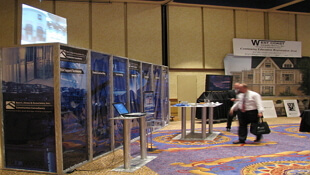
2009-With the success of the rear screen projection, BHA adds additional monitors to provide attendees with more information about BHA.
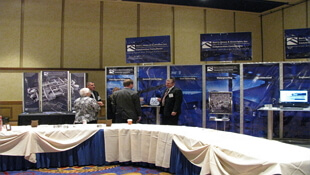
2010-BHA adds an interpretive professional development exhibit targeted to Building Envelope issues allowing adjusters and other non-construction professionals hands on access to the systems and components at the heart of many related such claims.



2011-BHA's Swing for Charity challenge is born.

2012-Always innovating, BHA expands its rear projection and professional development offerings to West Coast attendees.

2013-BHA showcases additional capabilities with a twenty-four foot, custom, convex, immersive video experience.

2014-BHA adds an iPhone display to give a hands-on demonstration of their data collection methods.
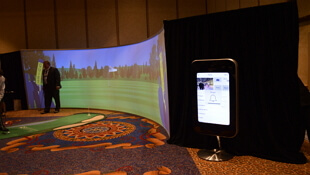
2015-BHA's twenty-four foot , custom, convex, immersive video experience was elevated with two additional rear projection screens, reflecting BHA's newest capabilities and services.

2016-BHA dazzles attendees with their new exhibit comprised of more than 15 integrated, high definition, LCD displays. iPads are stationed on tables to conveniently demonstrate BHA's data collection processes.
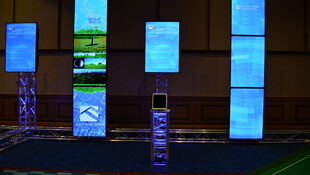
2017-BHA's Swing for Charity Golf Challenge raised $2,225.00 for the National Coalition for Homeless Veterans and $1,900 for Final Salute.
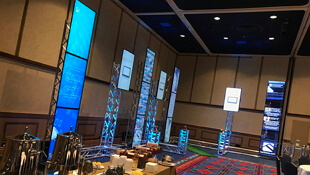
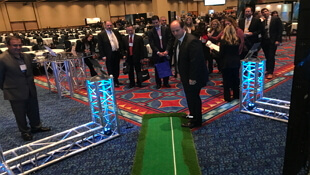
Read the court decisionRead the full story...Reprinted courtesy of
High-Rise Condominium Construction Design Defects, A Maryland Construction Lawyer’s Perspective
July 15, 2015 —
Nicholas D. Cowie – Maryland Condo Construction Defect Law BlogThe increased migration from suburbs to metropolitan areas has accompanied an increase in high-rise construction, including the development of high-rise condominium buildings. The resulting metamorphosis of urban skylines, such as seen from Maryland’s Baltimore harbor, has also brought with it many complex construction law and construction litigation issues. Our law firm’s Maryland condominium construction law practice is increasingly called upon to resolve disputes involving high-rise condominium construction design defects between condominium associations, developers, contractors, builders, and design professionals arising out of the construction of high-rise buildings.
A condominium building is typically considered to be a high-rise when it is approximately seven or more stories above grade according to the National Fire Protection Association Life Safety Code, which defines a high-rise as being 75 feet (23 meters) measured from the lowest level accessible to fire department vehicles up to the floor level of the highest occupiable story. High-rise buildings may be residential (e.g., condominiums or multifamily apartment buildings), commercial (e.g., commercial office or retail space), or mixed-use structures. A mixed-use high-rise development might contain retail space, office space, a parking garage, apartments, and condominiums, each owned or maintained by separate entities and each sharing common expenses for the building.
Read the court decisionRead the full story...Reprinted courtesy of
Nicholas D. Cowie, Cowie & Mott, P.A.Mr. Cowie may be contacted at
ndc@cowiemott.com




































































